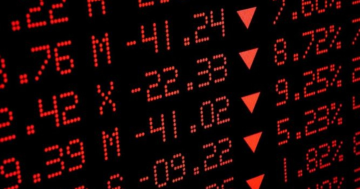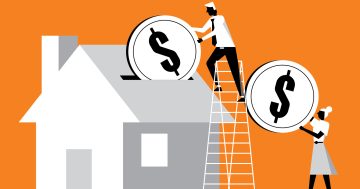Abi Tyas Tunggal* says for people thinking about getting into investing and wondering what the point of it is, the answer is the rate of return on their investment.
 A rate of return is what you get out of your investment.
A rate of return is what you get out of your investment.
If you’re thinking about getting into investing and wondering what the point of it is, the answer is the rate of return on your investment.
You can see a “return” in other parts of your life too.
For example, if you work hard at your job, you might see a return in the form of a promotion or pay-rise.
Likewise, if you exercise and follow a strict diet, you might see a return in the form of better health.
But when it comes to your finances and investments, here are some key things to know about your returns:
- The rate of return is the profit (or loss) of an investment over a period of time, expressed as a percentage of the original investment;
- A common time period over which to measure the rate of return is a year and this is therefore referred to as an annual rate of return; and
- The rate of return on an investment will be made up of any change in the value of the investment and any cash flows you receive from the investment, like interest payments or dividends.
But keep in mind, the rate of return can be calculated over a period of any length.
It’s also important to remember if you want to compare returns over different time periods, for example since inception vs. annual return, it’s useful to convert each rate of return into an annualised return.
This conversion processed is called annualisation.
Many people think of their rate of return as their investment performance.
What is investment performance?
Performance, as it relates to your investment portfolio, usually refers to the returns you’re seeing on your investment.
As an investor, you want a positive performance which results from a positive rate of return.
Negative performance is when your investment loses money and has a negative rate of return.
What determines my portfolio’s performance?
Your portfolio’s overall performance will depend on a number of factors.
But mostly, it’s driven by the performance of the individual investments contained in your portfolio.
Your investments are subject to market movements.
That means sometimes you’ll see negative returns, and other times you’ll see positive returns for the individual investments.
Markets can move in cycles, and downturns can turn around into periods of positive performance and vice versa.
our portfolio’s performance can mirror what’s going on in the broader market or be very different depending on how diversified your portfolio is.
How do you calculate a rate of return?
Returns come in various ways, but generally, they’ll come in the form of a dividend, interest payment, capital gain distribution, or just when the value of one of your assets changes.
The rate of return on your investments over a period of time is calculated as follows:

As an example, imagine you buy 100 units in the Spaceship Universe Portfolio at a unit price of $1.00, then the initial value is 100 x $1.00 = $100.
If the unit price then moves from $1.00 to $1.10 in 12 months, the final value of your investment would now be $110.
The change in value is $110 – $100 = $10, so the annual rate of return can be calculated by (($110 – $100) / $100) x 100 = 10 per cent.
What are dividends, interest, and capital gains?
Dividends
A price change is simpler, but what about capital gains and dividends?
A dividend is your cut of a company’s profits.
If you own shares in a company, you are a part owner of the company and are entitled to a share of the profits which is proportional to your percentage shareholding (if the company declares a dividend at the end of the period).
Generally, a dividend will come in the form of a cash payment.
Interest payments
Interest payments are generally paid to holders of bonds or other fixed-income securities.
Holders of such securities receive interest payments because they’re holding a portion of the company’s debt, and like a dividend an interest payment will generally come in the form of cash.
Capital gains
Finally, capital gains distributions may occur when investments held in a fund (like units in Spaceship Voyager’s managed funds) are sold at a profit.
The profit is then divvied up and paid to shareholders, much like a dividend.
What is the relationship between rate of return and compound interest?
Compounding interest is one of the most important phrases a beginning investor can understand.
It’s a way of potentially increasing your wealth, just by staying invested in the market.
In simple terms, compounding is any return earned on your initial investment plus any interest earned on your past returns.
For example, if you have your money in a bank account, it’s the interest paid on your balance plus the past interest the balance has already earned over time.
If you have your money invested, your rate of return may be calculated to include compounding interest.
How does compound interest work?
To keep it simple, let’s grab our original example from above where you bought 100 units in the Spaceship Universe Portfolio at a unit price of $1.00 and then the unit price moved to $1.10 in 12 months.
That was an annual return of 10 per cent.
Now imagine you have invested for a second year, and the unit price moved to $1.21 or another 10 per cent rate of return.
You would have earned $11 and have a total balance of $121.
Now imagine you invest for another year and earn 10 per cent again, the unit price would have moved to $1.331 and your investment balance would be $133.10 or in other words, over the three years you made $33.10 from remaining invested.
As you can see, while the rate of return stayed the same the amount of money you earned has increased from $10 in the first year to a total of $33.10 over the three years because the return you earned in the first year has compounded over the three years.
This is the power of compound interest. If you repeated this cycle for 20 years with the same 10 per cent annual return, your initial investment of $100 would be worth $672.75.
Please note: This is a hypothetical example to illustrate mathematical principles and is not a prediction or projection of performance for any of the Spaceship Voyager portfolios or any other Spaceship product.
The most important thing to understand is that the sooner you start investing, the more time can work in your favour.
No matter how little you have to invest, it has the potential to add up over time because of compound interest.
*Abi Tyas Tunggal is a contributor at Spaceship.
This article first appeared at spaceship.com.au.











